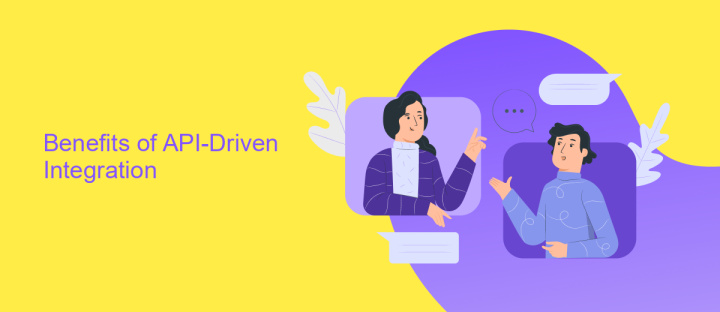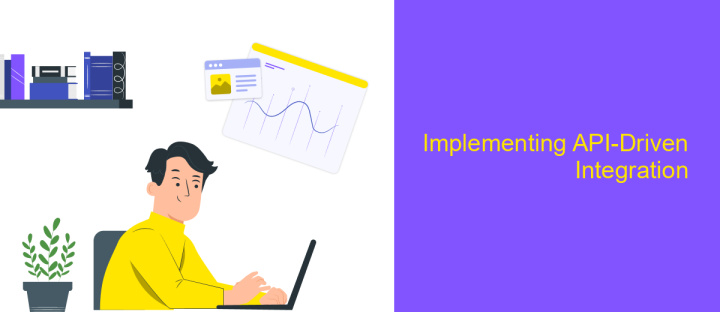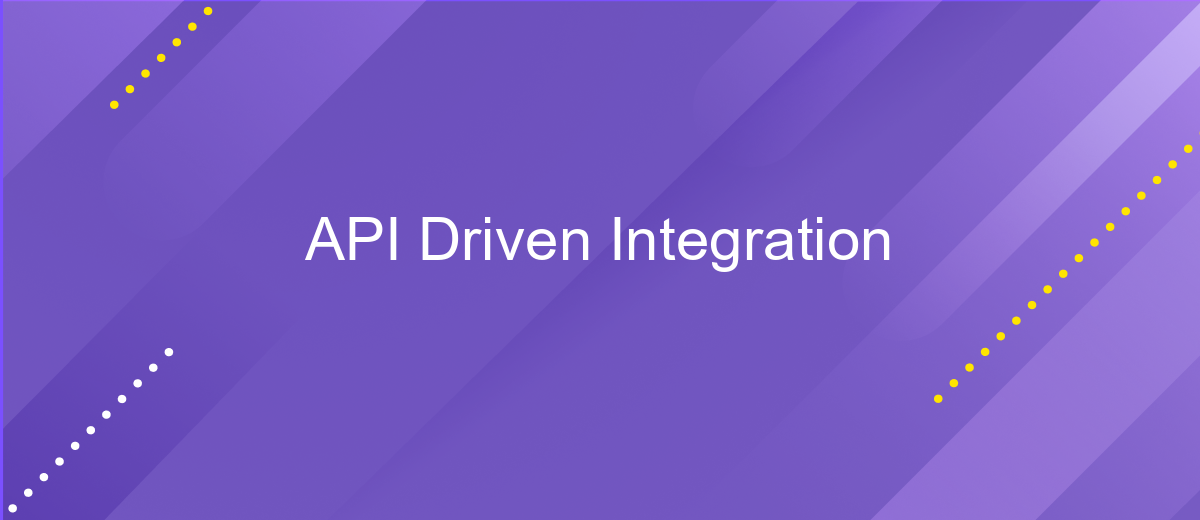API Driven Integration
In today's digital landscape, API-driven integration has emerged as a cornerstone for seamless connectivity between diverse software systems. By leveraging APIs, businesses can streamline operations, enhance data exchange, and foster innovation. This approach not only simplifies the integration process but also provides flexibility and scalability, enabling organizations to adapt quickly to changing market demands and technological advancements. Discover how API-driven integration is transforming the way we connect and collaborate in the modern world.
Understanding API-Driven Integration
API-driven integration is a modern approach to connecting different software systems, allowing them to communicate and exchange data seamlessly. This method leverages Application Programming Interfaces (APIs) to facilitate interactions between disparate systems, enabling businesses to streamline processes and enhance operational efficiency. By using APIs, organizations can create flexible and scalable integrations that adapt to evolving business needs.
- APIs provide a standardized way for systems to interact, reducing complexity.
- They enable real-time data exchange, improving decision-making processes.
- API-driven integration supports modular architecture, promoting agility.
- It enhances security by controlling access to data and services.
- APIs facilitate third-party integrations, expanding system capabilities.
Embracing API-driven integration allows companies to unlock new opportunities for innovation and growth. By connecting systems through APIs, businesses can automate workflows, reduce manual errors, and improve customer experiences. As technology continues to evolve, API-driven integration will play a crucial role in helping organizations stay competitive in a rapidly changing digital landscape.
Benefits of API-Driven Integration

API-driven integration offers numerous advantages, central among them being enhanced interoperability between diverse systems. By leveraging APIs, businesses can seamlessly connect disparate applications, facilitating data exchange and communication without the need for extensive manual intervention. This not only streamlines operations but also reduces the risk of errors, ensuring that data remains consistent and up-to-date across platforms. Furthermore, APIs provide a scalable solution, allowing organizations to expand their integration capabilities as they grow, without overhauling existing infrastructure.
Another significant benefit is the acceleration of innovation and time-to-market. With tools like ApiX-Drive, companies can rapidly configure integrations without extensive coding, enabling them to focus on core business activities and respond swiftly to market changes. This agility helps businesses maintain a competitive edge by quickly adapting to new technologies and consumer demands. Additionally, API-driven integration supports enhanced security protocols, offering controlled access and data protection, which is crucial in today’s digital landscape. Overall, API-driven integration empowers businesses to operate more efficiently, innovate faster, and maintain robust security standards.
Key Components and Architectures

API Driven Integration is a modern approach that facilitates seamless connectivity and interaction between different software systems. By leveraging APIs, organizations can create flexible and scalable architectures that support dynamic business needs. This method enhances interoperability and allows for the rapid deployment of new features and services.
- API Gateway: Acts as a single entry point for all API requests, ensuring security, load balancing, and request routing.
- Microservices Architecture: Breaks down applications into smaller, independent services that communicate via APIs, promoting scalability and resilience.
- Service Mesh: Provides a dedicated infrastructure layer for managing service-to-service communication, adding observability and security.
- Event-Driven Architecture: Utilizes events to trigger and communicate between decoupled services, enhancing responsiveness and flexibility.
- API Management Tools: Offer functionalities like analytics, monitoring, and versioning to efficiently manage APIs throughout their lifecycle.
Incorporating these components into an API-driven architecture ensures robust integration capabilities and supports the development of complex, distributed systems. This approach not only improves system performance but also accelerates the digital transformation journey by enabling agile and adaptive IT environments.
Implementing API-Driven Integration

API-driven integration is a modern approach that leverages APIs to facilitate seamless communication between disparate systems. This method allows businesses to connect applications efficiently, enabling data exchange and functionality sharing without manual intervention. By utilizing APIs, organizations can achieve greater agility and scalability.
To implement API-driven integration, it is crucial to first assess the existing infrastructure and identify the systems that require connectivity. Understanding the data flow and interaction patterns between these systems will guide the integration process. Following this, selecting the right API management tools is essential to ensure secure and efficient API operations.
- Identify key systems and applications for integration.
- Analyze data flow and interaction requirements.
- Select appropriate API management tools and platforms.
- Develop and test APIs for seamless communication.
- Monitor and optimize API performance continuously.
Once the integration is in place, continuous monitoring is vital to ensure optimal performance and security. Regularly updating APIs and adapting to new business requirements will help maintain a robust integration framework. This approach not only enhances operational efficiency but also supports innovation and growth.
- Automate the work of an online store or landing
- Empower through integration
- Don't spend money on programmers and integrators
- Save time by automating routine tasks
Best Practices and Considerations
When implementing API-driven integration, it's crucial to prioritize security and scalability. Ensure that all data exchanges are encrypted and authenticated to protect sensitive information. Use OAuth 2.0 or similar protocols for secure authorization. Additionally, design your APIs to be scalable, allowing them to handle increased loads efficiently as your business grows. Implementing rate limiting and monitoring can help prevent abuse and ensure consistent performance. Consider leveraging tools like ApiX-Drive, which can simplify the integration process by providing pre-built connectors and automating workflows, thus reducing development time and effort.
Another key consideration is maintaining comprehensive documentation and version control for your APIs. Clear documentation helps developers understand how to interact with your APIs, reducing integration errors and support requests. Version control is essential for managing changes and ensuring backward compatibility, allowing clients to transition smoothly between API versions. Regularly update and test your APIs to accommodate new features and security patches. By following these best practices, you can create robust, efficient, and secure API-driven integrations that enhance your business operations and customer experience.
FAQ
What is API Driven Integration?
How does API Driven Integration benefit businesses?
What are some common use cases for API Driven Integration?
What challenges might arise with API Driven Integration?
How can businesses implement API Driven Integration effectively?
Time is the most valuable resource for business today. Almost half of it is wasted on routine tasks. Your employees are constantly forced to perform monotonous tasks that are difficult to classify as important and specialized. You can leave everything as it is by hiring additional employees, or you can automate most of the business processes using the ApiX-Drive online connector to get rid of unnecessary time and money expenses once and for all. The choice is yours!


